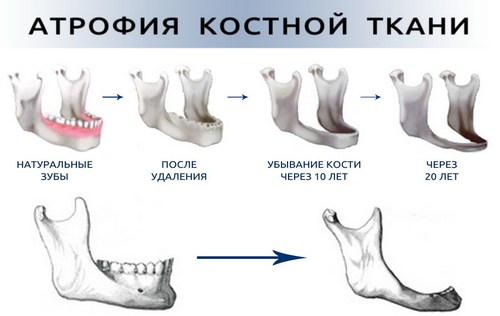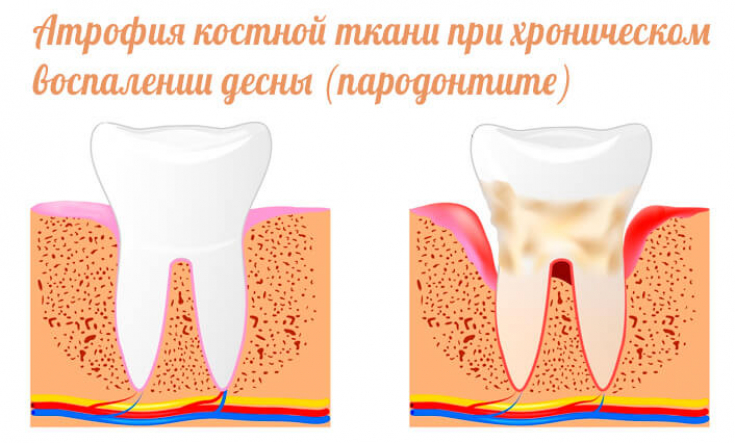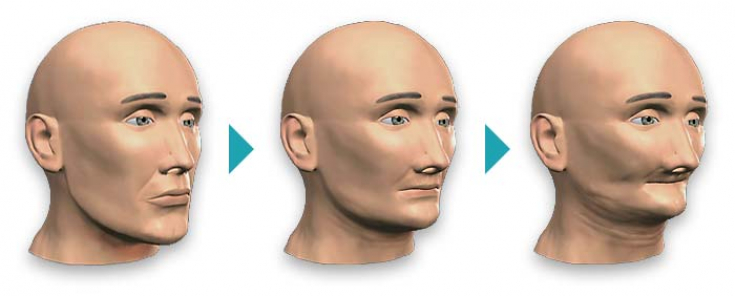With the loss of a tooth, a person loses a full-fledged chewing function, at the same time, atrophic processes of the jaw bones are activated. Many do not immediately go to the dentist when they lose a tooth. There is not enough money, fear, busyness, unwillingness to take care of your health – Reasons for delaying going to the doctor But it must be borne in mind that over the past time, the tissues of the jaw come into a relaxed state, which causes many negative consequences.
The causes of the process of atrophy are chronic diseases of the teeth and gums, inflammation, bruises and fractures, and genetic predisposition.
estet-portal.com will tell you about the consequences of bone tissue weakening and how to prevent the atrophic process.
- What is meant by weakening of the jaw tissue
- Dangerous Consequences of Liquefaction of Jawbone
- How bone thinning problems are solved by specialists
What is meant by weakening of the jaw tissue
Bone tissue is characterized by a variety of composition, which changes periodically. The amount of water in it is 10%, proteins such as collagen, – 25%, the rest – inorganic substances that give it rigidity and strength. In the normal state of the body's work, destructive processes are replaced by building ones, and when an empty place appears, something new is created on it. If the process of liquefaction of the jaw tissue prevails, then atrophy of these tissues occurs.
Subscribe to our page in Instagram!

Tooth injuries – symptoms and medical practice
The work of vessels in an empty place gradually stops, which means the cessation of tissue nutrition. In 96%, a year after the loss of a tooth, the amount of bone tissue in its place decreases by 30%. Therefore, it is important to replace the loss with an implant as soon as possible.
There are 3 degrees of atrophy: minor, moderate, complete: 
• minor – the weakening processes are not pronounced, the treatment takes place without surgical intervention;
• medium – to install implants, it is necessary to increase the bone, prosthetics are difficult;
• complete – bone tissue is built up, osteoreplacement surgeries are performed. > medium – to install implants, it is necessary to increase the bone, prosthetics are difficult;
• complete – bone tissue is built up, osteoreplacement surgeries are performed. > medium – to install implants, it is necessary to increase the bone, prosthetics are difficult;
• complete – bone tissue is built up, osteoreplacement surgeries are performed. >
Dangerous consequences of liquefaction of the jaw bone tissue
The most common cause of weakening of the jaw tissue – loss of a tooth, regardless of the method of extraction. Most often, liquefaction of bone tissue occurs after 50 years due to surgical removal of a tooth. The rate at which bone tissue decreases is highly individual for each patient.
• chronic diseases of gums and teeth – osteomyelitis, periodontitis, impacts and damage to the teeth;
• birth defects – various underdevelopment of the jaw and face, genetic predisposition;
 • the presence of common diseases – osteoporosis, metabolic disorders, lack of vitamin D and calcium, thyroid disease.
• the presence of common diseases – osteoporosis, metabolic disorders, lack of vitamin D and calcium, thyroid disease.
The started process of bone tissue weakening becomes irreversible. It is necessary to replace the extracted tooth with an implant, but without tissue augmentation, this is not possible in most cases.
The following effects are observed:
• chewing function is disturbed, healthy teeth are destroyed, the aesthetic appearance of a smile is distorted; facial expression changes – it acquires a more outdated appearance, wrinkles and folds in the mouth area are clearly visible, the lips sink inward, the jaws shorten; increases the risk of loss of adjacent teeth – chewing is less effective, a lot of food remains between the gaps of the teeth;
• diction is broken – speech is not clear, defects appear during conversation;
• reduction of treatment methods – with a running course, only the installation of removable dentures, which often break, will help. how to
to detect the disease in time
How specialists solve the problems of bone tissue thinning
Depending on the degree of damage and the need for tissue augmentation, the doctor chooses one of the methods of treatment:
• express dental implantation – passes without increasing bone mass, in this way they restore from 3 or more teeth, each implant is selected individually according to the size of the jaw, they take root very quickly, with the restoration of all functions of the teeth;
• sinus lift – designed to lengthen the bone tissue of the upper jaw, it is possible to shift the maxillary sinuses to free up space for bone tissue;
• osteoplasty – is performed if it is necessary to increase the width of the bone, using donor or own materials, depending on the accessory of the material, engraftment takes place in different ways;• removable prosthetics – the extracted teeth are replaced with a prosthesis, but the bone will still continue to decrease, the method is not effective, but on the contrary is less aesthetic, comfortable, safe; • bridge prosthesis – several crowns used for support, with this method the process of atrophy will gradually continue.
If you visit the dentist in time, the effectiveness of treatment increases significantly. To prevent liquefaction of the jaw tissue, you need to visit a doctor 2 times a year, even without good reason. Successful restoration of lost teeth with implants is possible no later than 6 months after removal.
Watch us on YouTube:






Add a comment